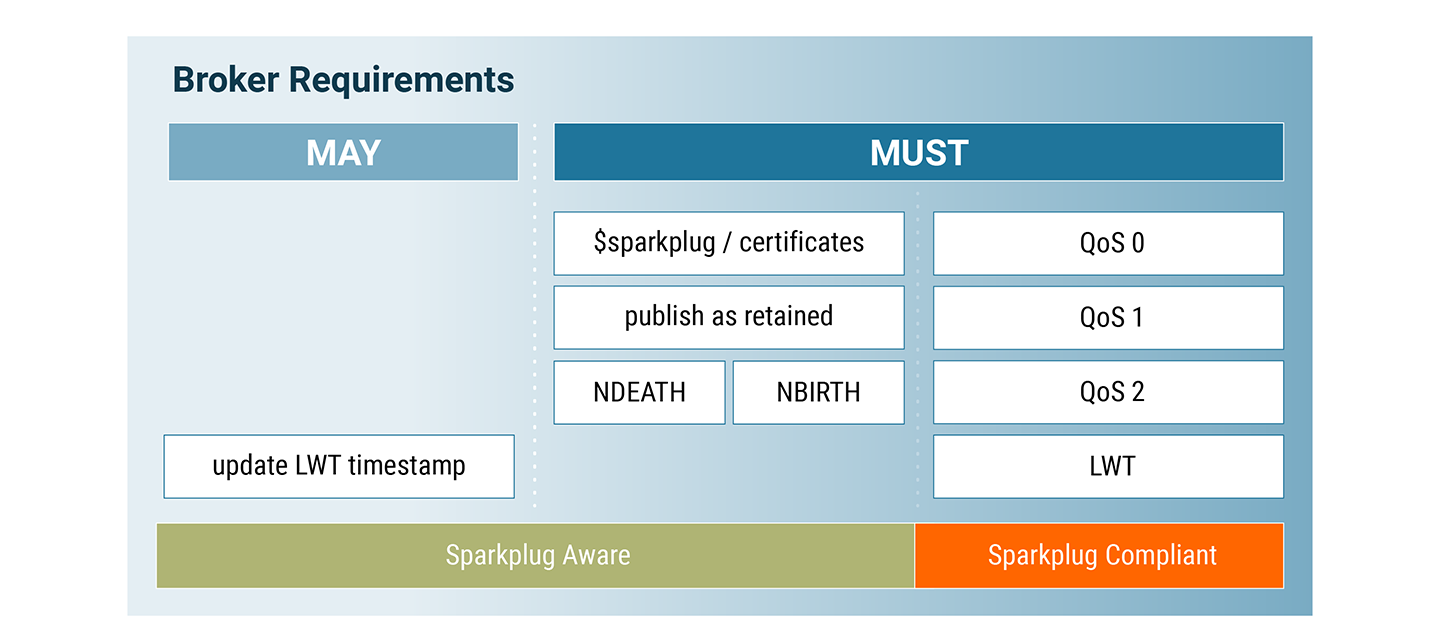What’s New in Sparkplug® v3.0.0?
The Eclipse Sparkplug Working Group has released the new Sparkplug Specification Version 3.0, upgrading from the v2.2 of the Sparkplug Specification of 2019.
What does Sparkplug Specification Version 3.0 provide compared to Version 2.2?
On a high level, the new v3.0.0 Sparkplug® Specification includes cleanup and formalization of the previous release. According to the Eclipse Sparkplug Working group, the goals were to clarify ambiguities in version v2.2 and make clear normative statements while maintaining the general intent of the v2.2 specification.
For example, Chapter 2 “Principles” of the new specification has replaced the “Background” chapter in Spec 2.2. It now describes in detail the key principles of Sparkplug, and Chapter 5 “Operational Behavior” very extensively describes the operational aspects of Sparkplug environments. The organization also included MQTT v5.0 specific settings, especially in respect to the different session settings, e.g “Clean Session” in MQTT 3.1.1 vs “Clean Start” in v5.0.
Sparkplug infrastructures have a specific subset of requirements on MQTT Servers (in the specification document, an “MQTT Broker” is referred to as “MQTT Server”). Any fully MQTT v3.1.1 Server/Broker will meet the requirements of Sparkplug infrastructures.
However, not all of the features of the MQTT Specification are required.
Essentially required features are:
- QoS 0 (at most once) for data
- QoS 1 (at least once) for state management
- Retained Messages support
- “Last Will and Testament” (LWT) for state management
- Wildcard available
The specification distinguishes between a “Sparkplug Compliant MQTT Server” and a “Sparkplug Aware MQTT Server”.

CLICK HERE TO READ MORE ABOUT “Sparkplug Compliant MQTT Server” VS “Sparkplug Aware MQTT Server”.
How To Become Sparkplug Compatible: A Guide to Sparkplug 3.0 Certification
The Sparkplug Compatibility Program allows you to prove compatibility and certify your product for Eclipse Sparkplug and MQTT-based IoT infrastructure.
By getting listed in the compatibility program, you will gain the confidence that your products meet stringent quality and interoperability requirements. Your compatible products will get visible for current and future adopters of Sparkplug and, in turn, this will build your brand and expand your market reach.
To become certified, you must pass multiple open-source tests that confirm conformance to Sparkplug Technology Compatibility Kit (TCK). If a product passes the compatibility tests, the Sparkplug Working Group will add it to its official list of compatible products. Once licensed, you can market the compatibility to the outside world using the Sparkplug Compatible logo.
CLICK HERE to view a detailed step-by-step guide on how to get certified using Sparkplug Technology Compatibility Kit (TCK).
What’s Next?
With the TCK application and the Sparkplug Aware HiveMQ broker, all the required tools for further Host Application and Edge Node tests are ready to continue with the Sparkplug 3.0 Certification of Hardware and Software.







